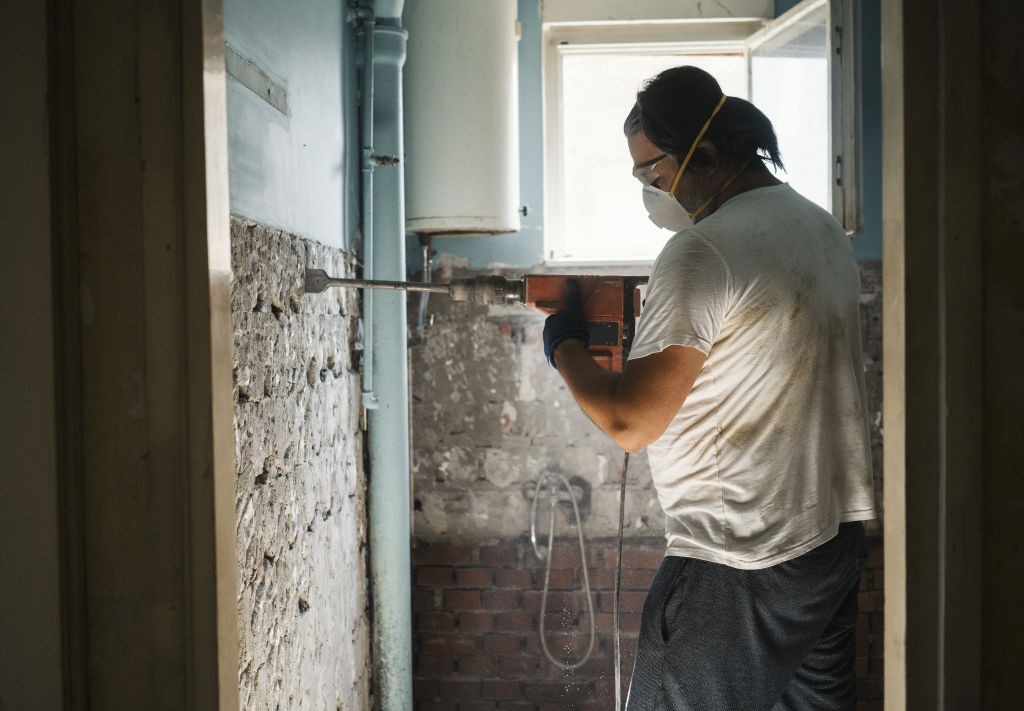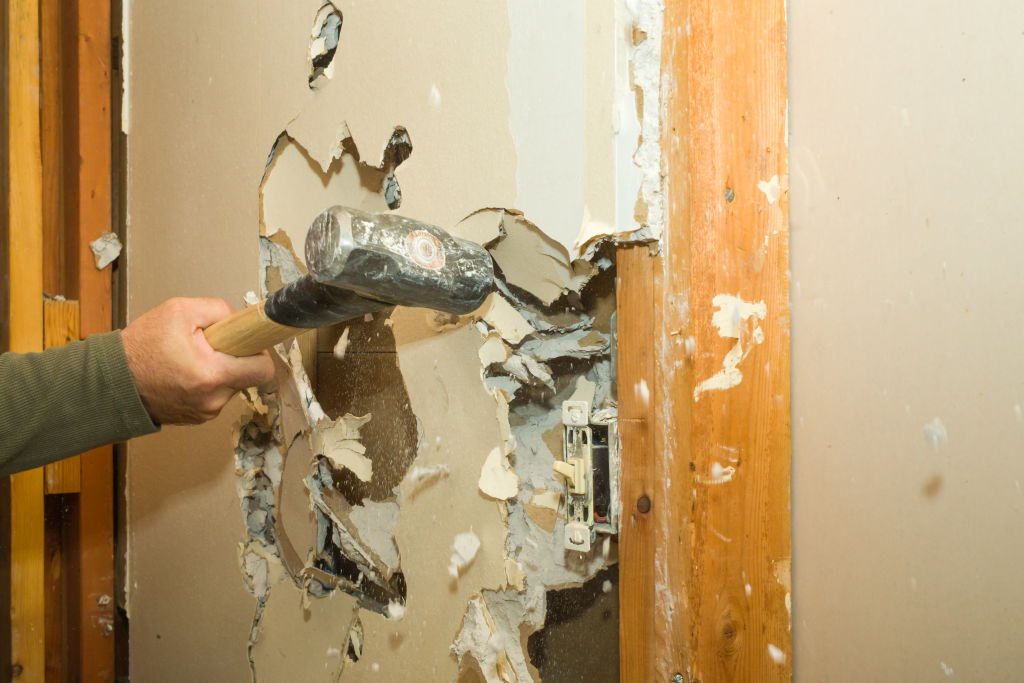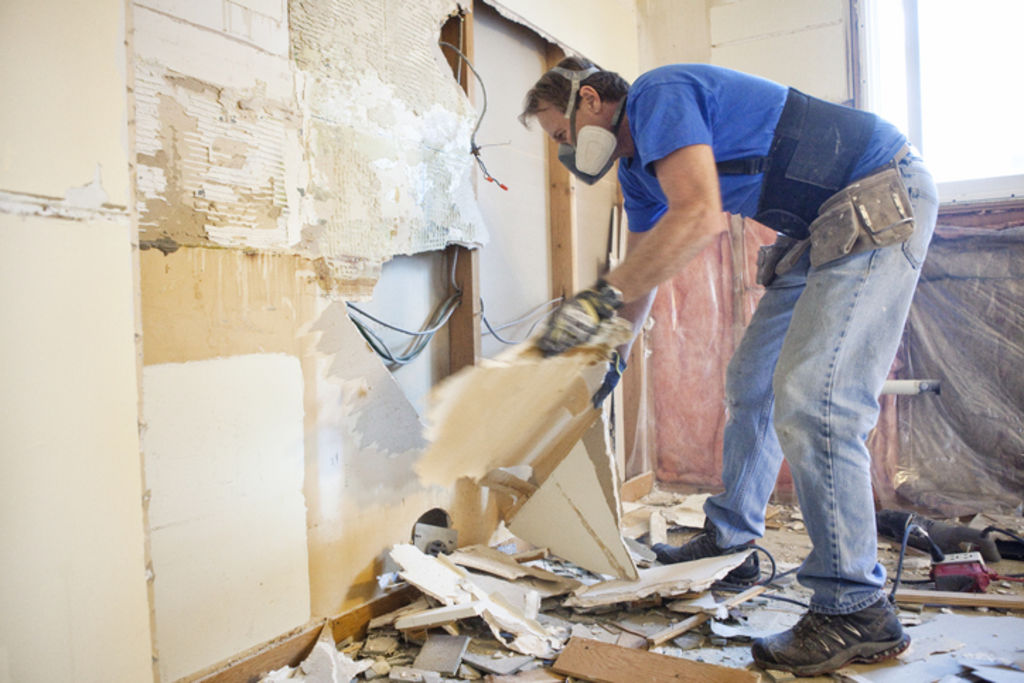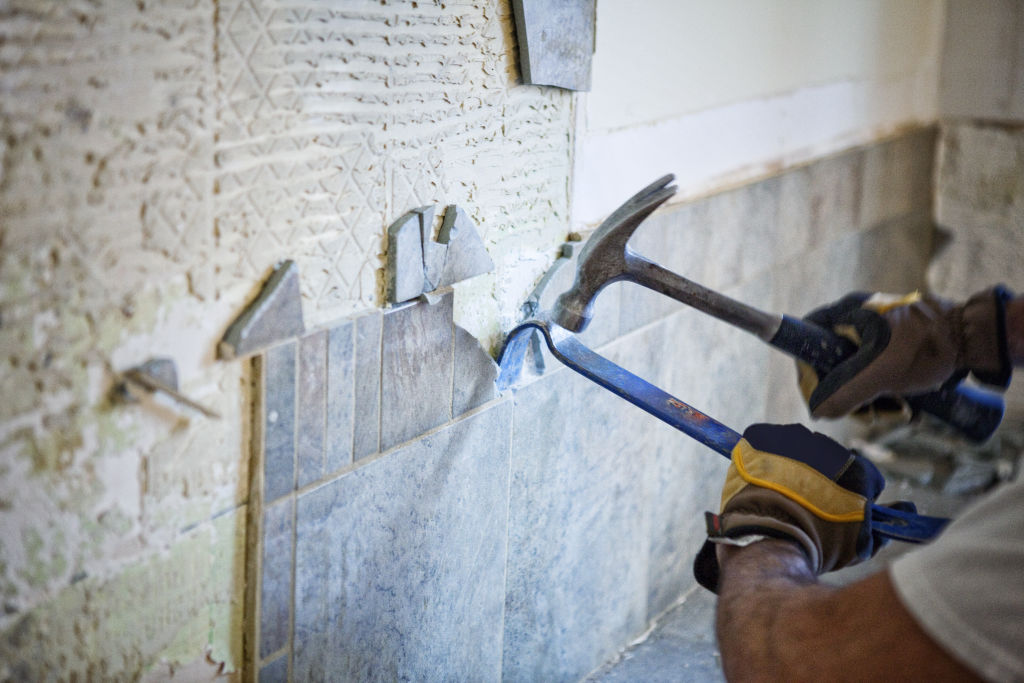Looters, emotions and neighbours: The do's and don'ts of demolishing your house

After 18 months of seesawing conversations about renovating and selling, my family and I finally decided to demolish our house.
We purchased it eight years ago and affectionately called it the Peach Pit in reference to the retro diner in Beverley Hills 90210 and the overwhelming ’80s peach-coloured walls, bathroom tiles and even matching vents.
Our eldest child was three when we first moved in and made it our own, painting over the peach and stripping off the wallpaper. Our two sons arrived afterwards, so it was the only home all three children can remember.
Listen to episode three of Domain’s podcast Somewhere Else :
Structurally the house was in good order, but the floor plan was a challenge and builders quotes of up to $650,000 to add an upper level convinced us to start from scratch.
Knocking down to rebuild seems pretty straightforward, but there’s a lot to it and the past two months have proved to be tough.
In the hopes it may help any other demolishers, here’s a list of demo do’s and don’ts:

Looters, emotions and neighbours
For some people this isn’t an issue, but I recommend being emotionally prepared.
So many people ask, “Will you be watching it?” and my answer was always “no”. I knew I would be a blubbering mess if I saw the house I raised my children in being torn apart.
In the last two weeks before demolition, when all the roof tiles have been removed and parts of the ceiling have collapsed and the grass is almost knee-high, your house will start to resemble a squatters’ palace.
Fortunately for us squatters weren’t an issue, but people who saw temporary fencing as an invitation to help themselves were. They stole toolboxes and, believe it or not, the switchboard from the metre box.
One saving grace was our immediate neighbours, whom we kept well-informed. Despite the noise, dust and general inconvenience from three days of demolition, they were completely understanding.

Hurdles to clear before demolition
Before you even begin to entertain the thought of demolishing, make sure you actually can. Check in with Land Use Victoria (or your relevant state-based authority) to find out if your property has any caveats, covenants or easements, which may limit the way you use your site.
Contact your council to see if there are any vegetation overlays, which may require you to apply for tree removal permits. If the trees you want to cut down are native or well established, the council will most likely request an arborist’s report.
Ask your demolition company to assess the site for street access by taking into account the fall across the block and any overhead power lines. If you live on a busy road, you may also have to pay extra for traffic management.
The final step is abolishment of services and this can take some time. Check with your builder to confirm their power, gas or water needs, but commonly you must contact your utility supplier to have the gas and electricity completely removed – not just disconnected. You could also need to arrange a plumber to cap off the water.

Permits
Don’t swing the wrecking ball until your building permit is approved by council. Councils are notoriously slow and often ask for extra information before they approve new builds, all of which can take months and if neighbours object years.
The last thing you need is to be paying for a rental while your house sits vacant.
I would recommend employing town planners to prepare your permit application. Our town planners knew the system back-to-front and even knew which planning officers at the council were easy to work with, and others not so much.
If all goes well and your permit is approved, council will ask you to apply for an asset protection permit before demolition. You pay an application fee and a bond to cover any damage to council infrastructure, such as footpaths, nature strips and driveway crossovers.
The demolition company applies for a demolition permit from your council and this can take up to a month. The company will also check for asbestos, which, if found, will cost extra to remove.

Quotes
We sourced quotes from four demolition companies – all were within $1000 of each other. As a guide, our home cost us $16,500 to demolish.
To offset this and upcycle as much as possible, we sold as many fixed items on Gumtree and Facebook Marketplace as we could. This included everything from the water tank to the en suite toilet. But be careful, some items, particularly those involving gas, require professional removal.
One demolition company said they would revise their quote upwards because they had planned to salvage items from our house. This would effectively penalise us for onselling our own belongings.
The company we opted to go with allowed us to sell our fixtures without changing their price.
Most demolition companies don’t supply their own temporary fencing, so be sure to factor this cost in. As a rough guide, fencing companies charge $350 for 50 metres of fencing, including installation and dismantling.
Lastly, good luck!
We recommend
We thought you might like
States
Capital Cities
Capital Cities - Rentals
Popular Areas
Allhomes
More
- © 2025, CoStar Group Inc.










